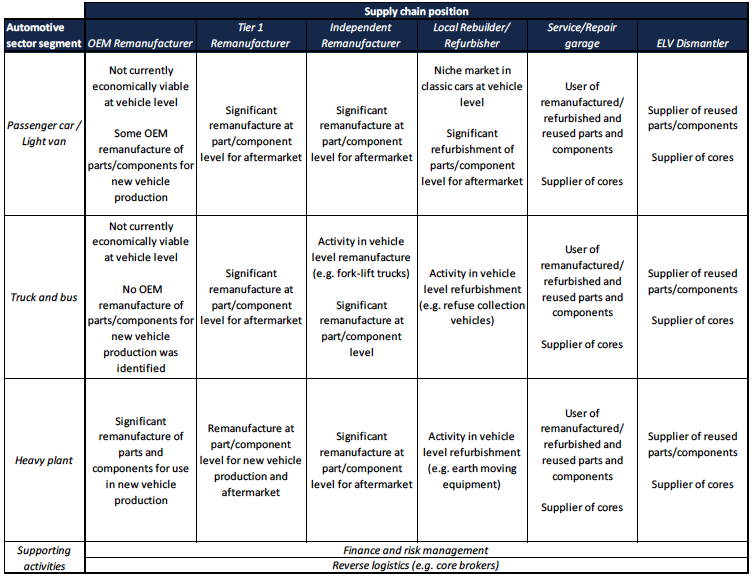Remanufacture, refurbishment, reuse and recycling of vehicles: trends and opportunities
This report describes the short, medium and long term trends related to the remanufacturing, refurbishment, reuse and recycling of vehicles, parts and components in Scotland.
2. Medium and long term trends
The following section describes some of the key medium and long term trends that will affect the automotive sector beyond the timescale of the 2015 ELV Directive targets. This covers a range of interlinked trends including political/legislative, economic, social, technological and environmental. The current activities of various parts of the automotive sector are then discussed and the key features of a 'circular economy' described. A simplified supply chain model is then considered to frame the discussion on future opportunities. A brief overview of the response in other countries to the circular economy is provided. Finally, a summary of the potential benefits and opportunities are detailed.
2.1 Overview of key medium and longer term trends
2.1.1 Political/Legislative
By 2050, the global population is estimated to have grown to around nine billion people (almost a third more than current levels). Coupled with this growth in numbers is the projected increase in the spending power of developing nations [4] . The resulting increase in demand for a broad range of goods (including vehicles) will mean ever increasing raw material and fuel use.
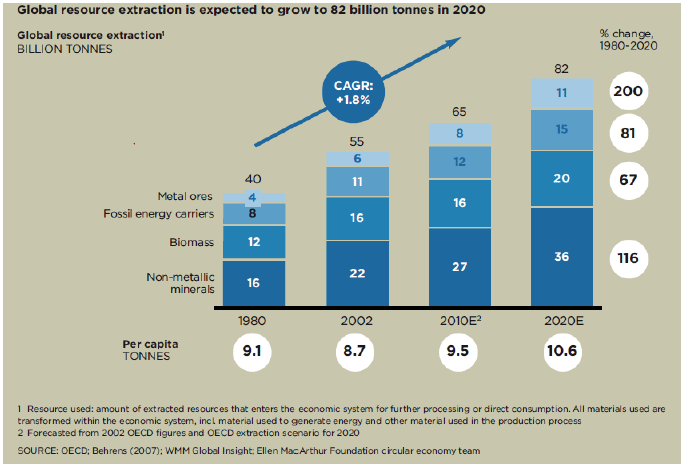
Figure 5 - Projected growth in global resource extraction to 2020 [5]
The implications of these trends are the subject of increasing attention by national governments around the world seeking to develop appropriate framework conditions to address the challenges and opportunities that will arise. Increasing global demand for resources has important implications for security of supply and the sustainability of production industries. For example, the European Union has launched its Resource Efficient Europe initiative as part of the Europe 2020 Strategy. This provides a framework to ensure resource efficiency is addressed across a range of strategies, including energy, climate change, industry and transport, amongst others.
2.1.2 EconomicClosely linked to the increasing global demand for resources, such as fuels and materials, is the impact of this on input prices. The historical commodity price trends are shown in the figure below.
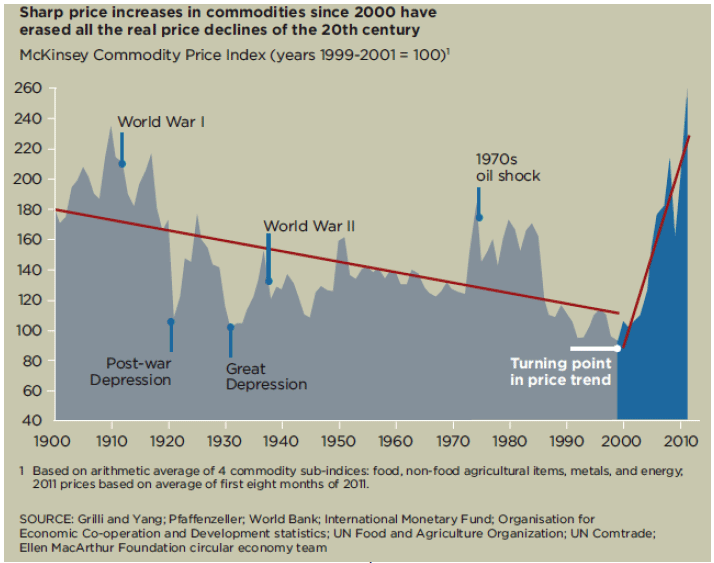
Figure 6 - Historical commodity price trends [6]
The above figure shows a decreasing trend in real commodity prices in the last century with this now being replaced by an upward trend. From an automotive producers perspective this means increases in input materials such as steel, copper and other valuable metals and rare earth elements. It also means increasing energy costs from the production process.
2.1.3 SocialThe issue of the global trends of increasing population size and increasing consumer spending power in developing nations has already been discussed. In addition to this there are trends in consumer demand for vehicles which are also noteworthy. These include:
- Increasing demand for 'low carbon' vehicles (fully electric and hybrid)
- Increasing demand for 'infotainment', driver assistance and safety features within vehicles ( e.g. DVD players, GPS systems and automatic proximity warnings)
Both of the above trends act to increase the electrical and electronic composition of vehicles.
2.1.4 TechnologicalIn 1996 the automotive industry led by the industry body SMMT (Society of Motor Manufacturers and Traders) launched a major Foresight Vehicle initiative to help the UK automotive companies develop key technology to ensure global competitiveness. Financial support for technology developments was provided by the then Department of Trade and Industry. This £150m support underpinned developments in five key thematic areas identified by the SMMT automotive industry group. Over 100 projects involving 400 organisations in the sector developed key technology in the areas of:
- HEAFV - Hybrid, Electric and Alternatively Fuelled Vehicles
- EPT -Engine & Powertrain
- ASSET -Software, Sensors, Electronics & Telematics
- FASMAT -Advanced Structures & Materials
- DMAPs -Design, Manufacturing Processes & Sustainability
Many of these technologies have had, and are continuing to have, a significant impact on the product design and manufacturing process and have led to significant reform in the structure of the supply chain. Changes have also resulted in the vehicle product life cycle and end of life vehicle. The Vehicle Foresight Roadmap [7] is an industry supported information source on technologies which highlight how road vehicle markets, products, systems and technologies might evolve over the next 20 years.
To illustrate some of the consequences of the shift in technology being adopted by the automotive sector it is useful to consider the trends in ASSET technologies.
There has been a quantum shift in the proportion of electronics in the average vehicle. This has been fuelled by new products to control the vehicle such as engine, transmission, braking systems, on-board infotainment, radio, GPS, audiovisual displays etc, convenience systems parking aids, environmental controls, driver aids etc.
As these new ASSET technologies are introduced changes have happened in the on-board controls and communications systems and supporting network architecture. For example, the conventional wiring harness of a vehicle is a complex arrangement of electrical cables, plugs connectors etc. that delivers electrical power and communications. As more electronics are added to the vehicle the wiring harness has increased in weight. Currently the vehicle wiring harness for a mid-range car can weigh around 20 kg and can be double or triple this weight in a luxury vehicle. In addition to developments taking place to replace copper with aluminium to reduce weight in the cable wires, developments are taking place in Controlled Area Networks and associated bus communication standards ( CAN bus) to make it possible for microcontrollers to communicate with each other in the automotive environment whilst reducing the complexity of the wiring loom.
The figure below shows a car without a CAN bus which shows the complexity of the wiring loom required [8] .
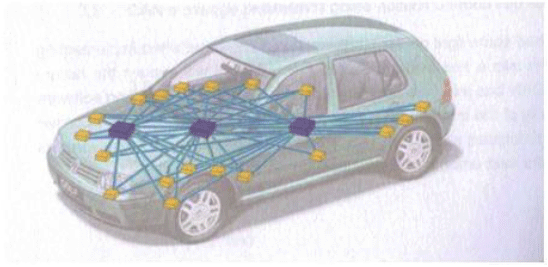
Figure 7 - Car without CAN Bus (Length and weight of wiring loom increases vehicle weight)
Separate Controller Area Networks are used to control and communicate with sensors and controls.
When a CAN bus hardware (a data bus comprising of two wires in twisted pair formation) is added it is possible to communicate with the separate Controller Area Networks and synchronise and integrate data whilst reducing the complexity, weight and cost of the wiring loom as shown in the figure below.
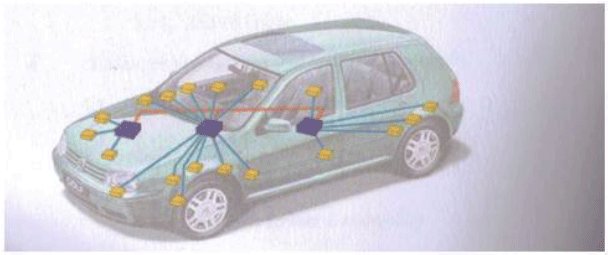
Figure 8 - Car with CAN bus
It is also possible to adapt this architecture and adapt to allow extra control options to be added.
An example of the types of sensors and controls in a CAN bus system is shown in figure 9.
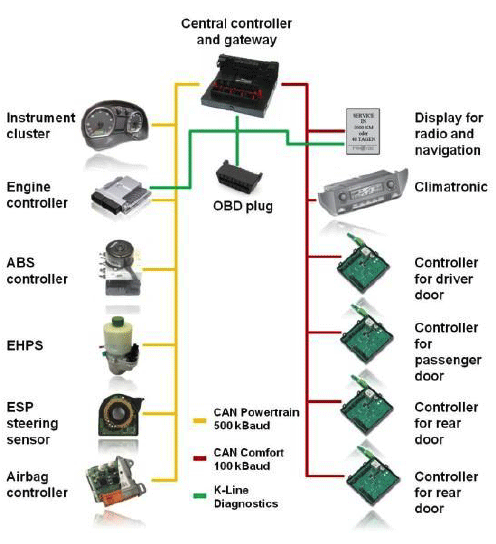
Figure 9 - Example of CAN bus topology [9]
The consequence of this technology is that greater functionality is added without impact on the weight of the vehicle. The impact to the End of Life Vehicle sector is that the wiring loom is potentially easier to dismantle and the control units are a potential candidate for remanufacturing. This is a market that has scope and potential for development.
The development of asset technologies also underpins the changes envisaged in automotive mechanical, hydraulic and electrical components. These mechanical/hydraulic systems are likely to involve a greater proportion of electric actuators that are electronically controlled and part of the CAN bus architecture. A recent publication suggests the following shift from mechanical to mechatronic components [10] .
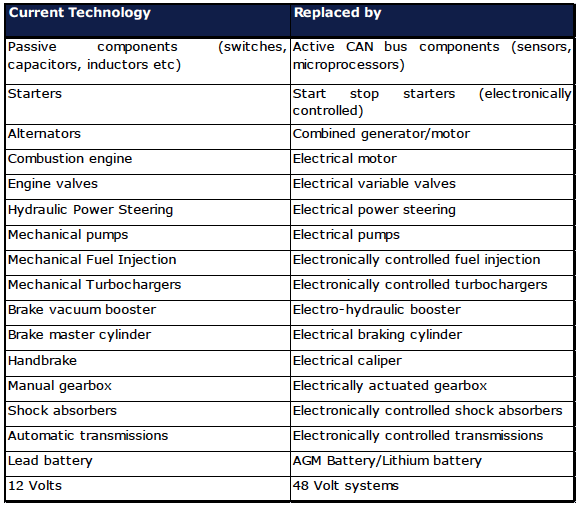
Figure 10 - Mechatronic and electronic impact on components
The above projected change is likely to have greatest impact on smaller independent remanufacturers due to the changing skills and equipment required. It may also open diversification opportunities for companies involved in contract electronic manufacture.
2.1.5 EnvironmentalThere are two main environmental trends linked to a growing population and increasing per capita consumption.
The first of these is resource depletion. This includes fuel sources for energy generation and raw materials for production inputs. The ELV Directive has a reuse and recovery target for vehicles of 95% by 2015 and, if this is achieved, it will mean only a small percentage of materials being lost to landfill. There will, however, be embedded resources ( e.g. water and energy) which are lost when materials are subject to energy recovery and even when recycled back to raw materials. Converting these raw materials back to parts and components, which can be used within a vehicle, will require further processing energy and the fuel to generate this energy.
The second main environmental trend is the increasing greenhouse gas emissions associated with increased production and consumption. There is a widely held view that greenhouse gas emissions should be cut by at least 80% by 2050 based on a 1990 baseline ( e.g. this target is established in the Climate Change (Scotland) Act 2009 [11] ) and increasing consumption and production of goods, based on current business models, is likely to lead to increased emissions.
2.2 Potential responses to medium and long term trendsTo begin discussing the potential responses to the long term trends it is useful to define some of the terminology used in this discussion. In the market for automotives, and their parts and components, the terms reuse, repair, refurbish, recondition and remanufacture are often used interchangeably or referred to as one homogenous group (using terms such as 'green parts', for example). It is useful to draw a distinction between some of these terms [12] :
- Remanufacturing:
- "returning a used product to at least its original performance with a warranty that is equivalent to or better than that of the newly manufactured product"
- Reconditioning/refurbishment:
- 'Reconditioning is the process of returning a used product to a satisfactory working condition that may be inferior to the original specification. Generally, the resultant product has a warranty that is less than that of a newly-manufactured equivalent. The warranty applies to all major wearing parts'
- Repair:
- 'Repairing is simply the correction of specified faults in a product. When repaired products have warranties, they are less than those of newly manufactured equivalents. Also, the warranty may not cover the whole product but only the component that has been replaced'
Where a product, part or component is reused then this is simply done without any of the above steps taking place.
The medium and long term trends, detailed previously, require a significant shift in the current approach to vehicle production and use. A key proposed response to these trends is detailed in a recent report by the Ellen MacArthur Foundation [13] . This report details the economic and business opportunities of a move from the current linear economic model to the so called 'circular economy'. The current linear economic model refers to new goods being produced; value created through exchange of asset ownership (from producer to consumer) and then disposed of at end-of-life, perhaps with some element of material recycling. The circular approach moves away from just avoiding landfill and improving end of life recycling and moves more towards reuse, refurbishment and remanufacturing, as illustrated in the figure below.
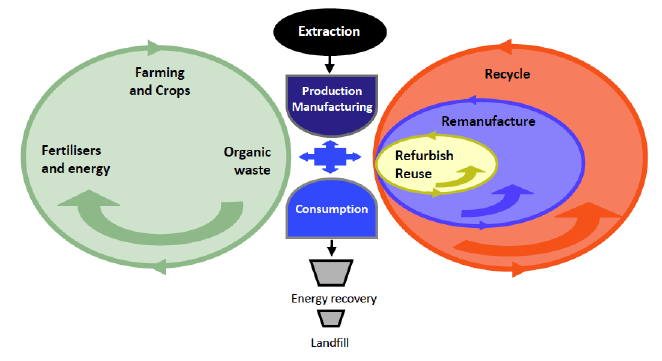
Figure 11 - Linear and circular flows of material [14]
The less a product has to be changed the quicker it can return to the market and the greater the savings on the use of labour, energy and materials (and associated environmental impacts).
2.3 The automotive sector's approach to refurbishment and remanufactureThe automotive sector already has a high rate of end of life reuse and recycling, as described in detail later in this report. Refurbishment and remanufacture of automotive parts is already a significant industry providing substantial economic and environmental benefits. In EU 27 member countries, remanufacturing accounts for the employment of over 32,000 people (with the automotive sector representing the largest part of this activity) with the use of remanufactured parts and components conserving up to 85% material and energy use compared to new parts [15] .
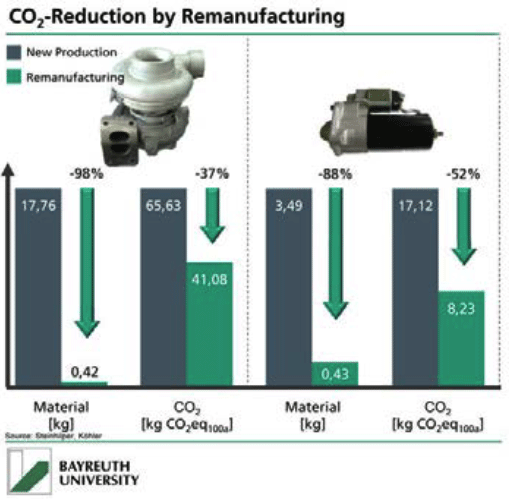
Figure 12 - Example material and CO 2 savings from use of remanufactured parts
Currently, only 10% of spare parts used in the aftermarket consist of remanufactured parts and very few are used in new vehicle production. There is, therefore significant room for growth in this area (and associated savings in CO 2 emissions).
Some examples of approaches of different automotive OEMs include:
Renault
Renault has established a remanufacturing plant near Paris. At this site there are several hundred employees remanufacturing a number of different mechanical subassemblies, from water pumps to engines. Renault obtains cores from its own distributor network from end-of life vehicle dismantlers as well as with new parts where required. The company has grown its remanufacturing operations into a 200 million euro business [16] .
Nissan
In Japan, Nissan operate a programme called 'Nissan Green Parts'. The programme covers a wide range of parts obtained from end-of-life vehicles and sold after reconditioning. In just over ten years to 2011, annual sales from Nissan Green Parts have risen from around 2 million yen to 1.61 billion yen [17] .
Mercedes Benz (part of the Daimler Group)
Mercedes-Benz considers the ease of repair and remanufacturing of components at an early stage in the design. Worldwide, the Daimler Group has over 2,100 employees working in remanufacturing. Technologies used include arc wire spraying, laser cleaning and surface activation. Over 12,000 remanufactured parts and components are available [18] .
Cummins
Cummins remanufacture engines and major components including electronics and mechatronics. Its remanufacturing facility in Cumbernauld is the company's base for targeting the European market. The company believes that remanufacturing will continue to be a growth area as engines and components increase in complexity [19] .
Caterpillar
Caterpillar has been providing remanufacturing services for more than 20 years. The European Remanufacturing Centre of the Caterpillar remanufacturing Services Division is located in Shrewsbury. Using a host of remanufacturing technologies, the facility receives engines and a range of other components from customers, and cleans, refurbishes, reassembles and updates them in compliance with the exacting standards set by Caterpillar. The site remanufactures thousands of items each year, bringing significant environmental and cost benefits to Caterpillar and third-party customers [20] .
Different parts of the automotive sector have different approaches to reuse, refurbishment and remanufacture. The section that follows considers the sector as three main parts: passenger vehicles/light vans; trucks and buses and; heavy plant.
2.3.1 Passenger vehicles/light vansIn the passenger vehicle/light van market, reuse is a fundamental part. Vehicles are reused by different owners until repair becomes uneconomic. Refurbishment of passenger vehicles tends to only occur in the classic car segment of the market. Current market conditions mean that it is uneconomic to completely remanufacture a passenger vehicle/light van and therefore this does not take place.
The leasing and short hire business models are mature practices in the passenger vehicle/light van market (with leasing particularly prevalent in the commercial sector). After a certain level of use these are not refurbished however, instead being sold on mainly to the domestic consumer market.
Moving away from considering the whole vehicle, this report will later discuss the existing market for a large variety of reused parts and components driven by dismantlers. The refurbishment of a smaller variety of higher costs parts and components is also a mature sector. For example, engines, transmissions, alternators, starter motors, brake callipers, etc.
The remanufacture of parts and components is also a growing sector. There is limited actual remanufacturing of passenger vehicle/light van parts and components that takes place in Scotland (although there is activity in remanufacturing automatic transmissions and torque convertors, for example). More parts and components (arising from end-of-life passenger vehicle /light vans arising in Scotland) do end up being remanufactured but this activity tends to take place in other countries with companies specialising in particular parts and components (for example, starter motors, alternators, hydraulic power steering systems, engines, transmission and gearbox systems, etc.). The route to these remanufacturers, for parts and components arising in Scotland is usually through core parts brokers.
The use of remanufactured parts and components is mainly in the aftermarket for passenger vehicles/light vans. There are, however, examples of remanufacturing sites being established near new vehicle production sites for the purpose of supplying parts and components for new vehicles. Such a remanufacturing facility has been established by Renault, near Paris, as described on page 16.
The emerging market for fully electric vehicles and hybrids is resulting in different end of life options being developed for the batteries that power the vehicles. These batteries are significantly more expensive than the lead-acid batteries used in conventional internal combustion vehicles and are have a residual life in other applications, such energy storage for excess renewable power generation.
2.3.2 Trucks and busesAs with passenger vehicles/light vans, the reuse and repair of buses and trucks is, obviously, a fundamental part of the market.
The higher capital cost of trucks and buses (relative to passenger vehicles/light vans) makes some refurbishment commercially viable in this part of the automotive market. For example, there are a number of companies in Scotland offering either refurbished fork-lift trucks or buses.
Remanufacturing is also present in this section of the market. For example, a company (based outside Scotland) specialising in the remanufacture of refuse collection vehicles.
Moving away from the reuse, refurbishment and remanufacture of the whole vehicle, there is an established market for part and component reuse, refurbishment and remanufacture (similar to the situation with parts and components from passenger vehicles and light vans). In this section of the market there are also examples of circular business models for specific parts. For example, in the truck and bus market a common practice is to lease the tyres from a supplier (which often retains ownership and is responsible for ongoing maintenance and replacement). These tyres can be removed and retreaded several times before then entering the rubber recycling chain. In some cases the haulier or bus company will opt to contract on a 'pence per mile' basis to enable greater certainty of costs. There are clear incentives for the supplier to manage the tyre in such a way that extends the usable life (including retreading) for as long as possible.
2.3.3 Heavy plantThe term 'heavy plant' covers a range of vehicles for different applications. For example, this part of the automotive sector includes vehicles for: construction and demolition; agriculture; mining and quarrying; industrial and military uses.
As with other parts of the automotive sector, the reuse and repair of vehicles is a fundamental part of the market. The higher capital cost of these types of vehicles mean that refurbishment and remanufacture of complete vehicles is also a significant feature. The use of short hire and leasing of heavy plant vehicles is also prevalent as maximising the utilisation of the vehicle is highly desirable for the owner of the asset.
The high value of individual parts and components in heavy plant vehicles also means that there is a mature market for reuse, refurbishment and remanufacture at this level. For example, Caterpillar has a well established remanufacturing operation for heavy plant vehicles which has grown by 8% to 10% in the last decade [21] .
2.4 Key features of a circular approach in the automotive sectorBefore discussing the opportunities for the automotive sector in following a more circular approach, it is useful to describe some of the key features of the 'circular economy'. This section considers features of the design stage, innovation in the business models used, reverse logistics and enabling factors to support the transition from linear to circular approaches.
2.4.1 DesignThe key features of design in a circular economy include:
- Design for disassembly ( e.g. active disassembly, snap fasteners instead of weld/adhesive joints, etc.)
- Material selection to minimise toxic materials and enable recycling ( e.g. using the same types of plastic polymer to ease recycling, reducing the use of PVC, etc)
- Standardisation and modularisation to simplify replacement (linked to ease of disassembly)
- Design for durability ( e.g. durability of the core skeleton of product with modules which can be replaced)
- Designing out waste in the production process
- Enabling a flow of information about disassembly, quality checking, remanufacture and testing to others in the supply chain
The key features of innovative business models in a circular economy include:
- Changing ownership to performance based payments ( e.g. tyre leasing, plant hire, etc.)
- Producers/suppliers retain ownership of vehicle to provide incentive to consider whole life costs and longevity of function at the design stage
- Warranties offered on refurbished vehicles and remanufactured parts and components
The key features of reverse logistics in a circular economy include:
- Better quality collection and treatment systems ( e.g. sourcing the correct quantity and quality of core parts in the right geographical location). The handling, transportation and storage of CAN bus mechatronic cores is becoming an even more crucial one that that of purely mechanical cores [22]
- Centralised refurbishment and remanufacturing capability to achieve specialisation and economies of scale (already apparent in the remanufacturing sector where companies specialise in specific parts and components, e.g. transmissions, ECUs, etc.)
A number of enabling factors are also important in developing a circular approach:
- Collaboration across supply chains is a crucial part of a successful circular economy. This is manifest in the way in which competitive advantage is currently gained in some parts of the automotive supply chain by not collaborating, e.g. in the area of reverse engineering, component replacement, and testing of mechatronic components. This leads to significant investment being required in establishing remanufacturing operations, particularly where electronic hardware and software systems are involved. Overcoming these commercial barriers and developing comprehensive shared data systems is a difficult issue to address. An example of where information sharing between producer and dismantler has been addressed, through the use of regulation, is the International Dismantling Information System [23]
- Industry standards and certification is also a significant issue. Overcoming consumer perceptions about the quality of the goods they are purchasing, leasing etc. is affected by the loose terminology used in the market. For example, it can be difficult for consumers to differentiate between companies claiming to supply refurbished parts and components and those supplying genuinely remanufactured parts and components. This issue is in the process of being partly addressed by the development of a British Standard for remanufacturing [24]
- Education and skills in remanufacturing and refurbishment is an important feature. This is relevant at all levels of employees. For example, the management skills and capabilities of business leaders and the increasing technical capabilities of operators
- Finance is also required to support research, development and deployment in areas such as initial product design, new business models and collection and remanufacturing of cores and dismantling/refurbishment of vehicles
- Supporting policy and regulation is required to provide a
stable environment for investment. This could include:
- Increasing landfill tax
- Public procurement of remanufactured/refurbished parts and components ( e.g. a study estimated that public bodies in the North East of England could save over £1m p.a. by procuring remanufactured vehicle parts instead on new [25] )
- Moving taxation from labour (a renewable resource) to material use (mostly non renewable and increasing supply pressures)
- Customer and corporate responsibility regulation ( e.g. in the areas of sourcing and end of life treatment routes for vehicle parts and components)
Section 2.4 provides an indication of a 'model' circular economy. To further illustrate this model it is useful to identify and define the different types of business involved in remanufacturing [26] :
- OEM Remanufacturers, which are typically the vehicle producers that remanufacture mainly their engines and gearboxes
- Tier One Remanufacturers, which are mainly the original manufacturers of original components
- Independent Remanufacturers, which are often privately owned and which remanufacture for the independent aftermarket but sometimes also for the OEM and Tier ones
- Local Rebuilders [Refurbishers], which are privately owned and perform rebuilding for the local market. They are often service workshops franchised by the Tier one
Each of the above has differing ability to influence design, change business models and acquire cores. They also have different access to knowledge of the disassembly process, sub-component sourcing and testing equipment/procedures.
In addition to this, there are a significant number of service/repair garages that source reused, refurbished and remanufactured parts and components. They are also the source of core parts for refurbishment and remanufacturing operations. Finally, the ELV dismantlers are an important part of the supply chain, operating as core parts providers.
The current simplified supply chain is summarised in the figure 13, below.
Figure 13 - Overview of automotive supply chain and current state of reuse, refurbishment and remanufacture at vehicle and part/component level
The above figure provides a framework for subsequent discussion about areas of opportunity, detailed in section seven.
Of the estimated 22 million remanufactured/rebuild units produced every year in Europe (for the car and light van market) the market share (volume and value) is split between the above company types as follows:

Figure 14 - Estimated breakdown of reman/rebuild units in Europe by business type [27]
The value and volume market shares are different due to the average OEM remanufactured components (engines, gearboxes etc.) having a value of around five to eight times higher than average.
Rough estimates of the number of remanufactured and rebuild units supplied to the car and light van market (in the EU) are shown figure 15, below.
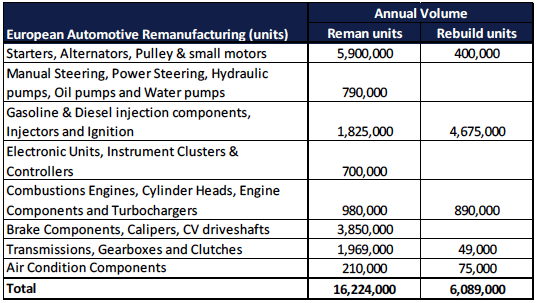
Figure 15 - Aftermarket replacement demand supplied by remanufactured/rebuild units in the EU [28]
The publication by Weiland identifies that some remanufactured and rebuild components are at a mature state ( e.g. starters, alternators etc., where remanufactured and rebuild units supply nearly 90% of the aftermarket). Other areas are at an earlier stage of development, such as ECUs, etc, and therefore offer greater growth potential. The overall EU supply of ECUs, Instrument Clusters and Controllers is 14% of the aftermarket. It is estimated that this figure is around 50% in the US, suggesting room for growth. Specific components are highlighted as having the most potential for remanufacture:
- Electronic control units (
EU aftermarket supply
of reman/rebuild is 300,000 of 2.5m total units (12%)), with most
attractive units for remanufacture being:
- Engine management for petrol/gasoline fuel injection
- Engine management for diesel fuel injection
- Chassis control for brakes and steering
- Automatic transmissions
- Electronic infotainment units (
EU aftermarket supply
of reman/rebuild is 400,000 of 2.4m total units (17%)), with most
attractive units for remanufacture being:
- GPS navigation
- Audio ( DVD, Radio etc.)
- Instrument clusters
However, this market requires high investment for non- OEM remanufacturers in reverse engineering the electronic hardware and software and creating test-rigs and programmes. This is indicative of a growing issue which will be increasingly faced by remanufacturers in future as components move from mechanical/electro-mechanical to mechatronic, as detailed earlier.
2.6 Other country responses to a circular approachThe previous discussion on remanufacturing and refurbishment has so far focused on the European market developments. Of course the remanufacturing sector is global in nature and there are several notable countries where specific policies and development measures have been introduced.
Remanufacturing has been a feature of the 10 th, 11 th and 12 th Five Year Plans of China (in 2000, 2005 and 2011, respectively). In 2004, remanufacturing was promoted as a key area in the State Circular Economy Projects. In 2010, the National Development and Reform Commission and 11 ministries of China jointly issued the document 'Opinions on promoting Remanufacturing Industry'. This provided guidance on factors such as: technology, management, support systems and policy safeguards, which affect the development of remanufacturing as well as highlighting the remanufacturing industry as a new growth point of China's economy. In Beijing there is the National Key Laboratory for Remanufacturing which is thought to focus on military applications [29] .
An example of investment in automotive remanufacture in China by an indigenous company is Mingjie, which, working with the German Fraunhoffer-Gessellschaft Bayreuth, is developing a facility in Guangdong Province to remanufacture turbochargers, engines and starters [30] .
In the United States there is a well developed remanufacturing sector, thought to employ nearly 500,000 people. Several states have proactive procurement policies in place to promote the purchase of remanufactured goods. In 2000, New York State introduced legislation to introduce a tax credit for recycling and remanufacturing. The US based Centre for Remanufacturing (based at the Rochester Institute of Technology) offers R&D support, structural and material analysis, product design advice, training and policy advice related to remanufacturing [31] .
A new 'Advanced Remanufacturing & Technology Centre' ( ARTC) is due to be launched in Singapore. It will be managed by the Singapore Institute of Manufacturing Technology ( SIMTech) which is a research institute of the Agency for Science, Technology and Research. The ARTC will be situated at CleanTech II, a new development located on the campus of Nanyang Technological University. Operations at the Centre are planned to start at the end of 2013 with significant funding support from the Singapore Economic Development Board. Its technology focus is on repair and restoration, surface modification & product verification. The Industrial membership interest includes; Rolls-Royce, Boeing and Siemens [32] .
Section seven of this report discusses the areas of potential longer term opportunity arising from the above trends and developments.
Contact
There is a problem
Thanks for your feedback
